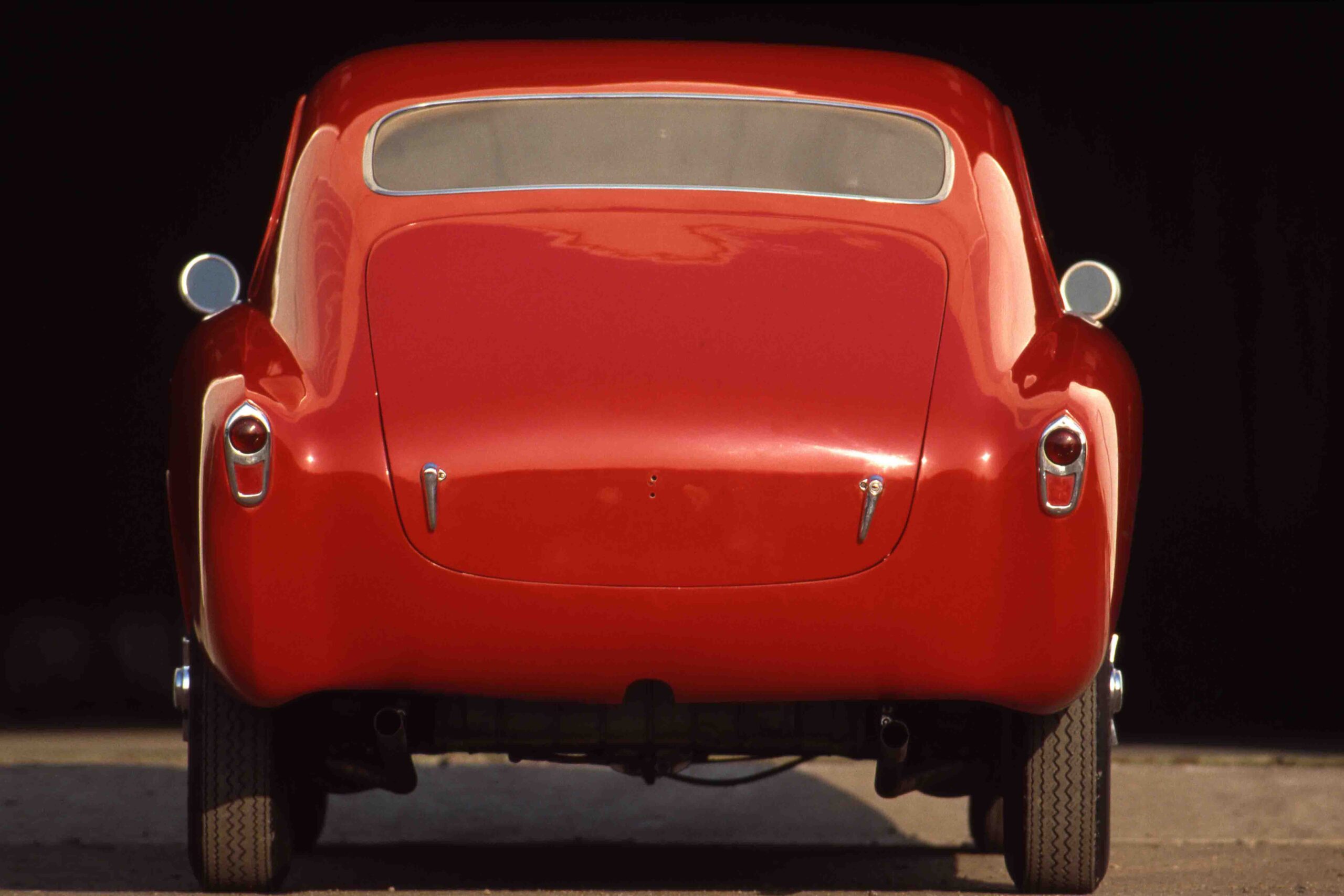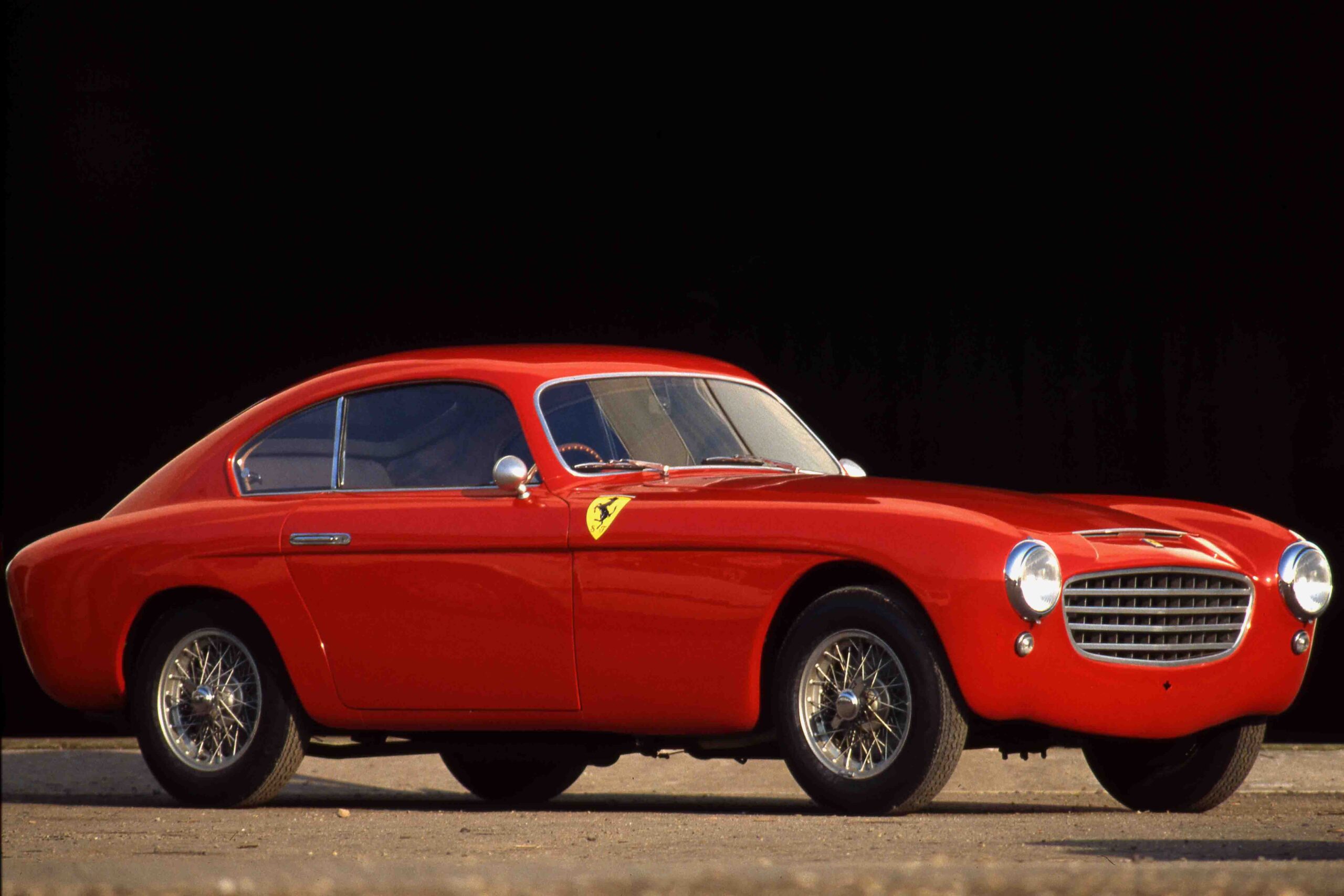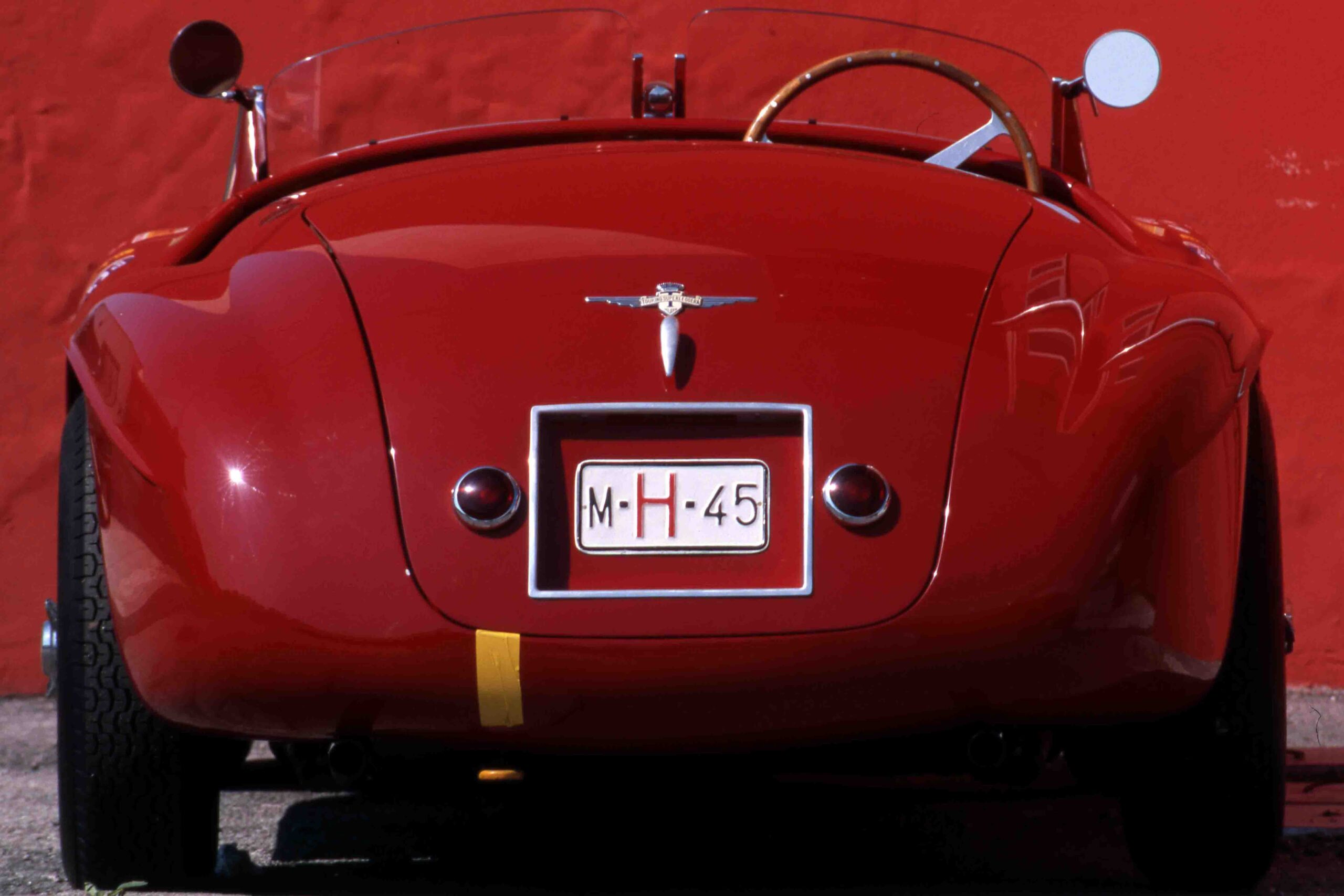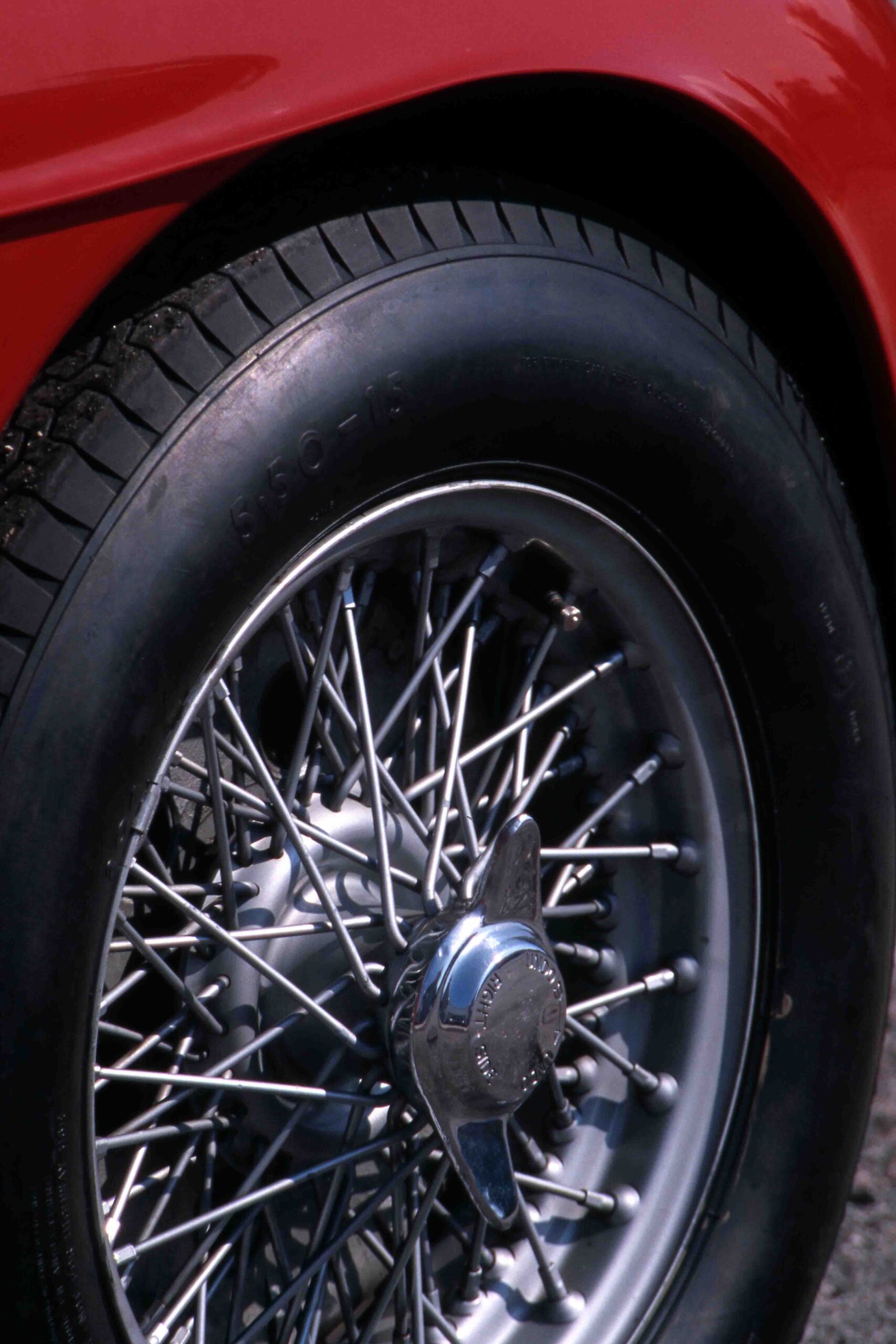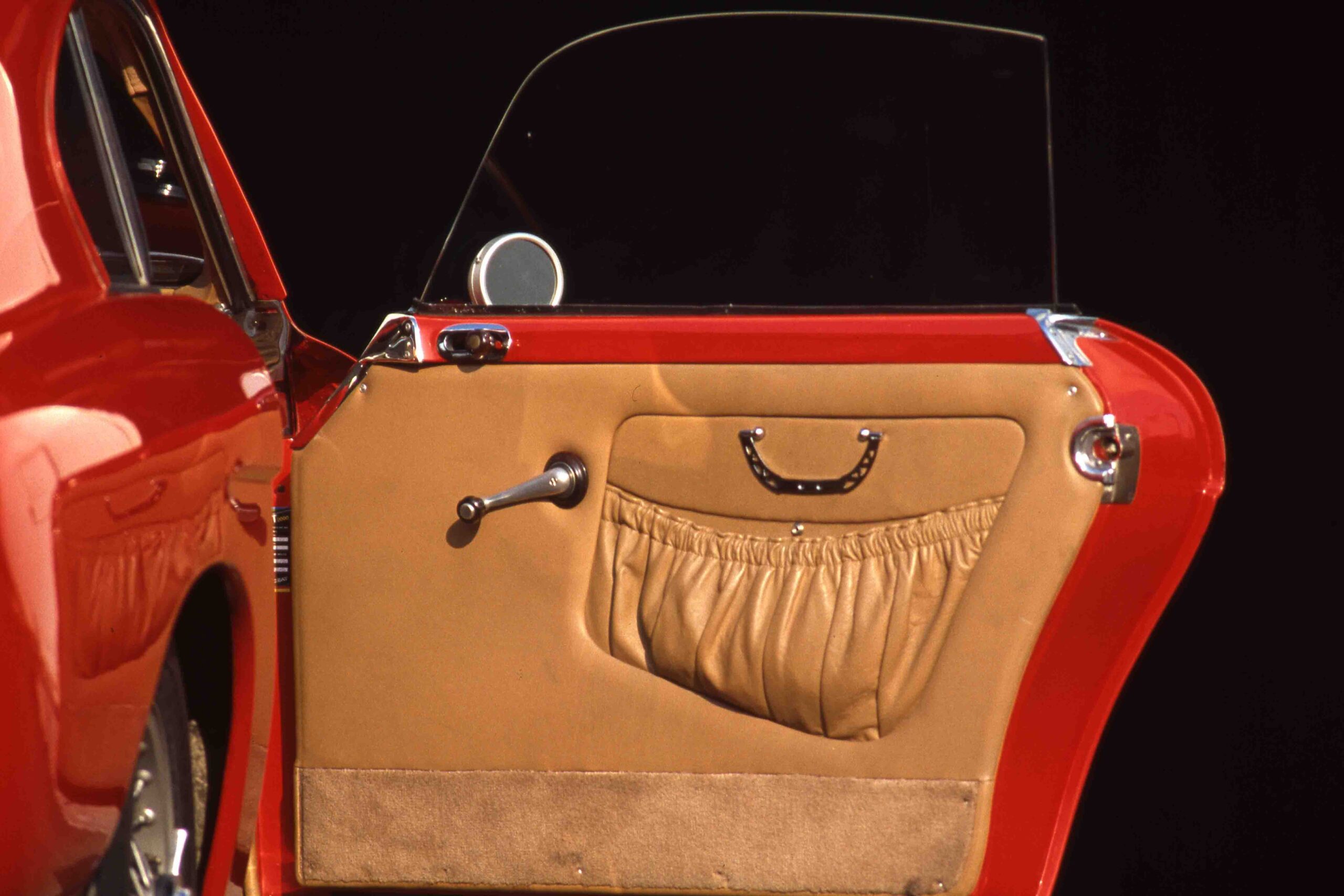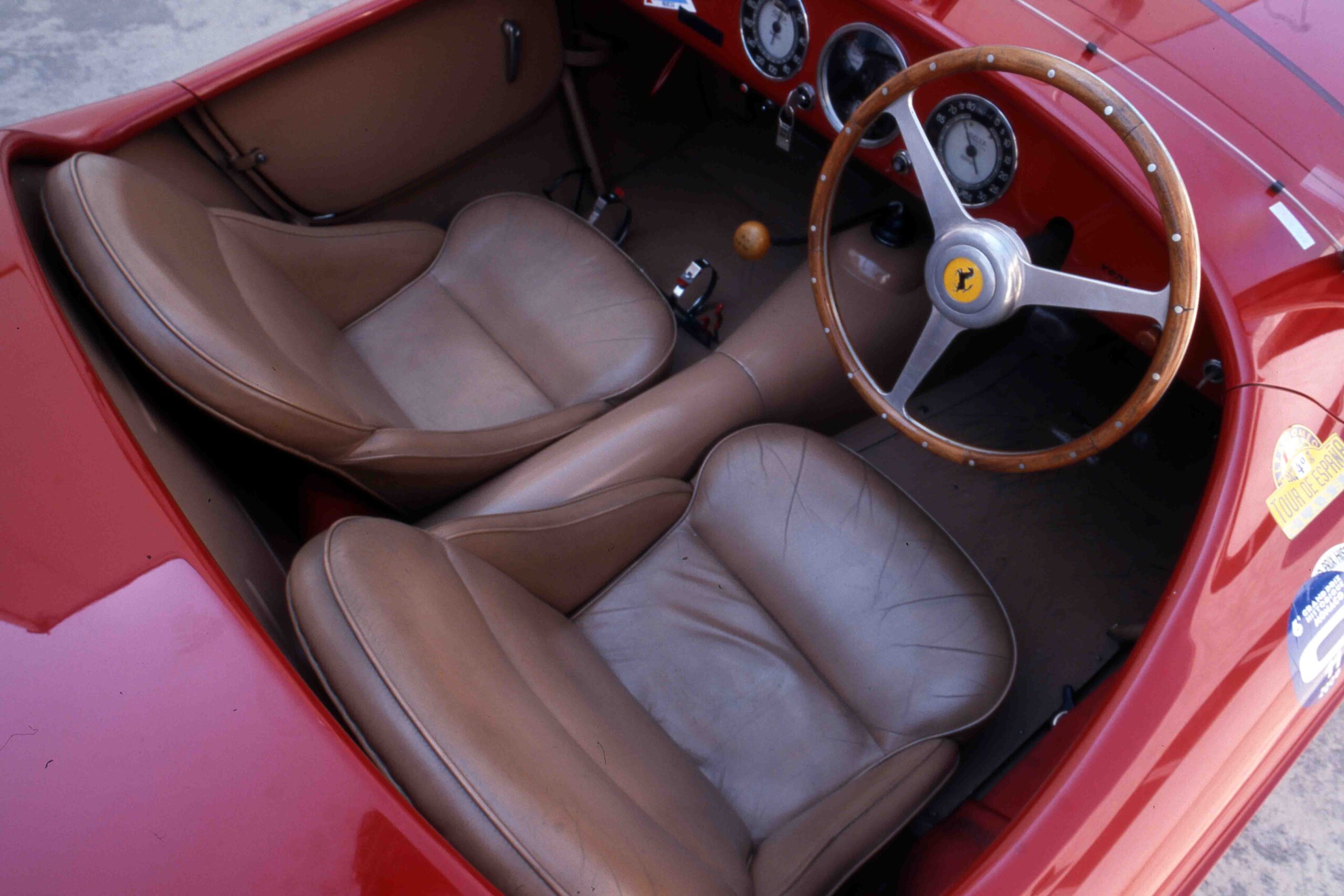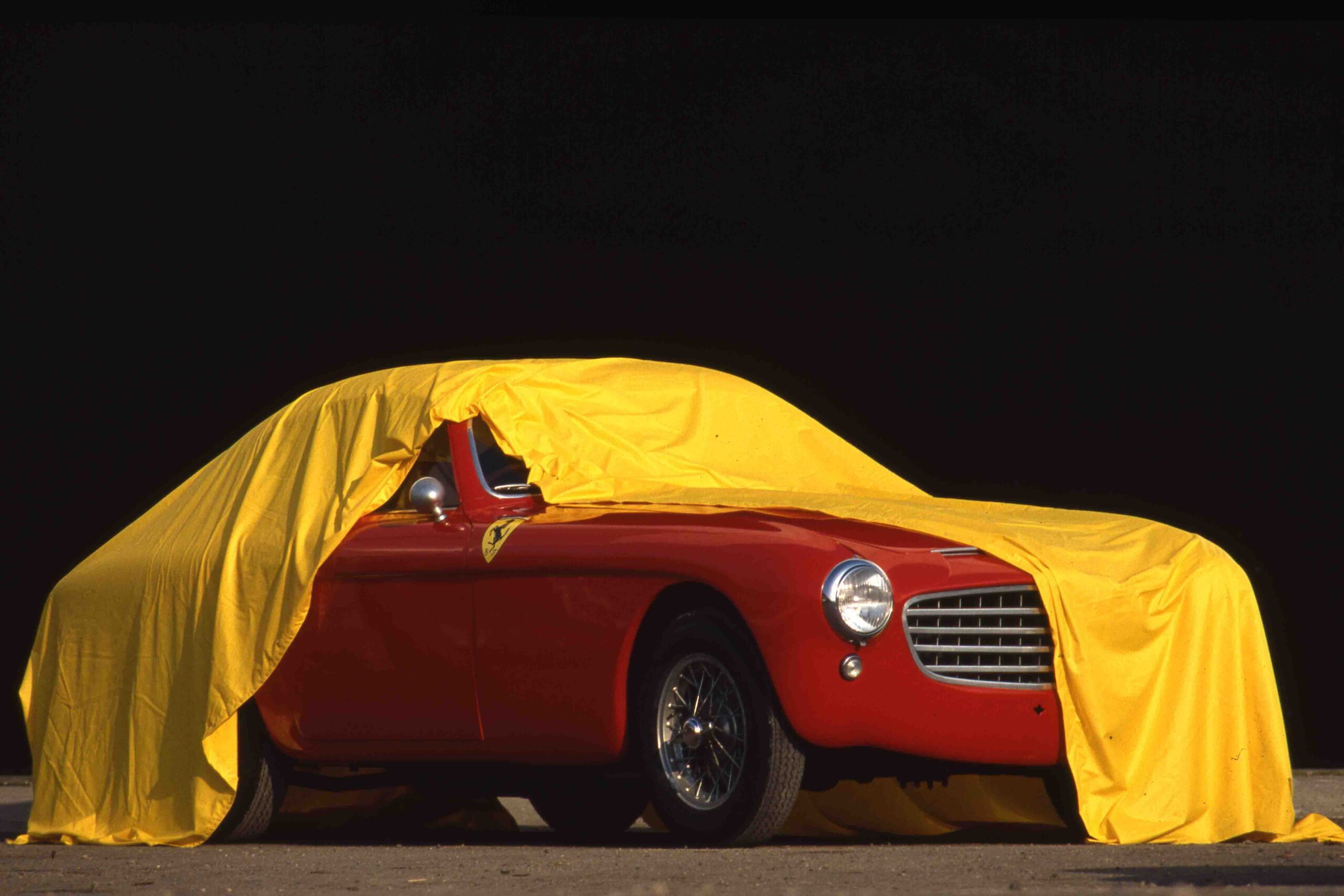ORIGIN OF THE SPECIES
Actually, the first Ferrari produced in series. Indeed, the first model built by the Maranello Factory (125 S) has been produced only in two examples. Unveiled at Turin Motor Show in 1947, the Ferrari 166 has been built in 46 examples, all provided with the 1,995.02 V12 engine designed by Gioachino Colombo. The number defines this car – as for many models of the future – is the single capacity of any one of the 12 cylinders (166).
The bodyworks were built by different coachworks – it was the period in which were created the name ”Fuori Serie” to define a model car with minor changes between them. Touring, Vignale, Fantuzzi (who re-bodied a 166 previously shaped by Touring), and Pininfarina, who design only one of those, were the “Ateliers” which created the beautiful shapes of the different 166s. Before all, completions were for Enzo Ferrari the reason to found a company based on the V12 concept, and this sports car embodied all the features for racing.
The very first Ferrari V12 was the 1,497cc 125 engine, designed by Gioachino Colombo, who convinced Ferrari to trust in the twelve-cylinder layout.
Only two examples in total of type 125 were built in 1947, and we can recognize the 166 model as the first little production Ferrari. A V12 2.0 liter, initially conceived for competition and developed by Engineers Gioachino Colombo and Giuseppe Busso, was installed in coupes and spiders bodyworks for road use, although were many the owners who raced with them. Spiders built by Carrozzeria Touring had body sides that curve under the car, which led a famous Italian journalist (Giovanni Canestrini) to call them Barchetta (little boat), a name that has been applied ever since to this type of sports cars.
One of this beautiful “spider” was produced on request of Gianni Agnelli, in bi-tone color Malva. One painted in yellow and blue was acquired by Evita Peron, and another was given by Enzo Ferrari to Froillan Gonzales as a gift for the first Ferrari victory in Formula One at the 1951 British Grand Prix.
The models 166, were produced in two series: the first series has been assembled from 1947 to 1948 in 33 examples (from chassis #024MB) of which 25 had a Touring Barchetta bodywork, 5 Touring Berlinetta, 1 Vignale Spider, 1 Vignale Berlinetta, 1 Zagato Berlinetta, 1 Vignale Spider, 1 Vignale Berlinetta, 1 Zagato Berlinetta and 1 Cycle Wing Spider. Second series was produced in 1949 in 13 examples of which 7 were Vignale Spiders, 3 Vignale Berlinetta, 1 Autodromo Spider, 1 Farina Berlinetta and 1 Scaglietti, then rebodied by Fantuzzi as Touring Barchetta in 1970.
The weight of these beautiful cars was 650 Kg. The 12-cylinder is derived as told from the V12 125 engine designed by Ing. Colombo and had a front-longitudinal configuration. Light alloy cylinder block, head with 2 valves per cylinder and a single overhead camshaft per bank of cylinders.
However, on all Ferrari engines, as for the 166 Type, the connecting rods (for pistons on opposing cylinders banks) share a typical big-end journal on the crankshaft, a standard practice of Ferrari engines. The first series Ferrari Berlinetta and spiders Ferrari, were as beautiful as speedy, reaching 170 Km/h, a massive speed in the forties!
It provided excellent performance by the standards of the day. Four 166 bodyworks (#0020M, #0026M, #0038M, #0060M) were equipped – after their production – with an upgraded engine featuring the same specifications of its following production car unveiled in 1950 (Ferrari 195). One of these (chassis #0026M) won “La corsa più bella mondo” the Mille Miglia in 1950, driven by Giannino Marzotto and Marco Crosara. 70 years after that success, we look forward to the next Mille Miglia (scheduled at the end of October) where it would be possible to see one of the rare 166 who won the race so far.
ENGINEROUTE
ORIGIN OF THE SPECIES
Actually, the first Ferrari produced in series. Indeed, the first model built by the Maranello Factory (125 S) has been produced only in two examples. Unveiled at Turin Motor Show in 1947, the Ferrari 166 has been built in 46 examples, all provided with the 1,995.02 V12 engine designed by Gioachino Colombo. The number defines this car – as for many models of the future – is the single capacity of any one of the 12 cylinders (166).
The bodyworks were built by different coachworks – it was the period in which were created the name ”Fuori Serie” to define a model car with minor changes between them. Touring, Vignale, Fantuzzi (who re-bodied a 166 previously shaped by Touring), and Pininfarina, who design only one of those, were the “Ateliers” which created the beautiful shapes of the different 166s. Before all, completions were for Enzo Ferrari the reason to found a company based on the V12 concept, and this sports car embodied all the features for racing.
The very first Ferrari V12 was the 1,497cc 125 engine, designed by Gioachino Colombo, who convinced Ferrari to trust in the twelve-cylinder layout.








